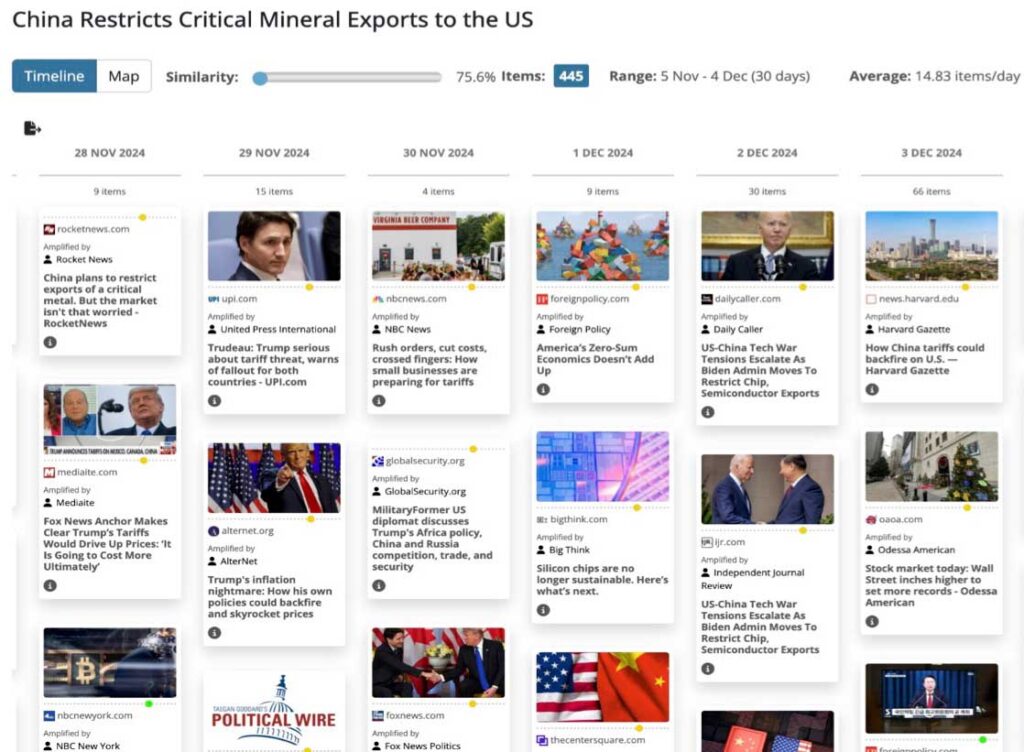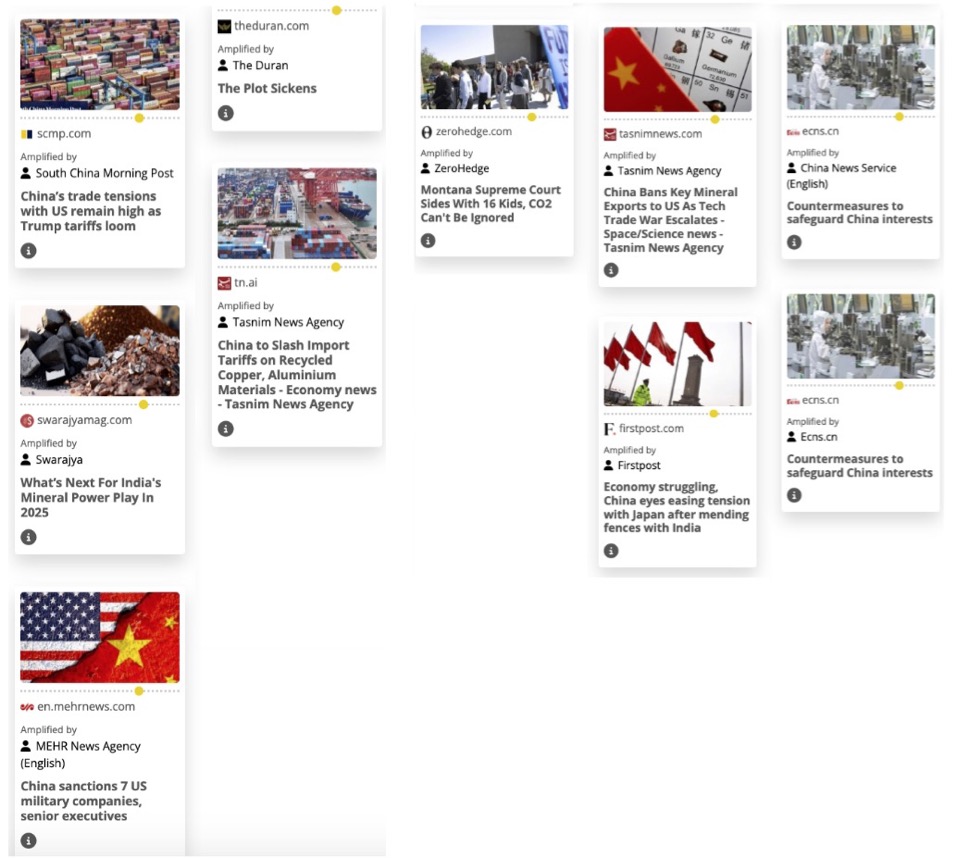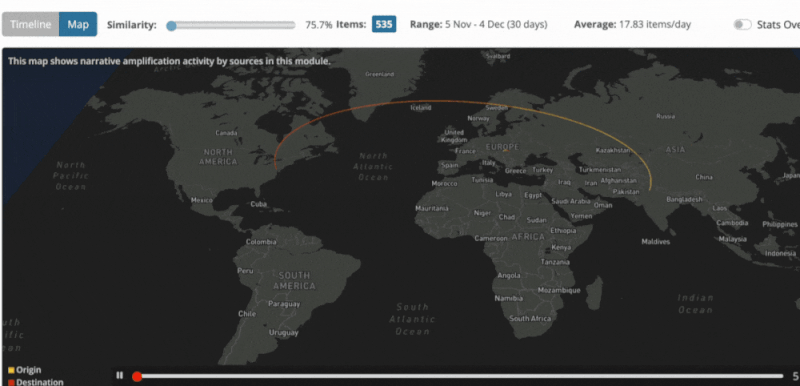
China’s recent decision to restrict critical mineral exports to the United States has sparked a wave of media coverage globally, highlighting the complex interplay of economics, geopolitics, and national security.
However, the narratives framing this development vary significantly between US sources and Foreign Malign Influencers. EdgeTheory’s theme-tracing reveals how these narratives are different and shape not only public opinion but actions too.
Below are two visualizations generated by EdgeTheory’s Theme Tracing Tool, highlighting the lifecycle and amplification patterns of US Media narratives compared to Foreign Malign Influencer narratives. These visualizations illustrate how themes emerge, grow, and spread over time.
US Narratives

FMI Narratives

Figure 1: Contrasting US and FMI narratives about China's Critical Mineral Restrictions
Narrative Mapping: Shows how narratives start and grow over time

Figure 2: This geospatial timeline of FMI narratives indicates a narrative alignment among China, Russia, and Iran.
EdgeTheory's Theme Tracing offers comprehensive visualization and analysis of the lifecycle of narratives, from their origin to amplification and eventual targets. This tool enables decision-makers to track the trajectory of narratives, identify their focus and reach, and reveal key amplifiers joining influence campaigns.
With Theme Tracing, businesses and organizations can:
Narrative Intelligence equips businesses and policymakers to respond to fast-evolving narratives, whether the goal is countering misinformation, amplifying positive messaging, or addressing emerging concerns. In this post we apply Theme Tracing to reveal how US media and foreign malign influencers frame the same geopolitical event, identifying key influence strategies from malign influencers.
Critical minerals, such as rare earth elements, are essential for advanced technologies ranging from semiconductors to clean energy systems. For example, China produces 94% of the world's gallium and 83% of germanium. Gallium and germanium are essential components in semiconductors, while germanium is also utilized in infrared technology and fiber optic cables,
As the United States continues to reduce its reliance on Chinese imports, China’s export restrictions signal an escalation in the ongoing US-China trade and tech war. The stakes are high for both nations, making this issue a media focal point.
US Media outlets approach the topic by emphasizing its implications for the domestic economy, supply chains, and global markets. Key themes include:
While some articles take an alarmist tone, warning of the potential for long-term economic harm, others remain solution-oriented, focusing on steps the US can take to strengthen its position.
Most sources promoting these narratives are known for their high reliability and low bias, indicating US sources covering Chinese export policy tend to present a balanced view of developing policy implications.
Top sources include: Daily Caller, Independent Journal Review, Foreign Affairs, Yahoo! News, GlobalSecurity.org, and Foreign Policy.
In contrast, narratives from foreign malign influencers are designed to undermine confidence in US policies and amplify China’s strengths. These narratives often include:
These themes are consistent with the CCP’s strategic narratives: portraying China as a rising global power and the US as struggling to adapt to a changing world order.
Most sources promoting these narratives are aligned with China, followed closely by known Russia-aligned amplifiers, highlighting certain shared narrative priorities between these countries. Top sources include SCMP, Borneo Bulletin, Tasnim News Agency, and China-US Focus.
This divergence in narratives highlights a critical lesson: narrative framing shapes not only how events are perceived, but also how stakeholders respond.
The contrasting narratives surrounding China’s critical mineral export restrictions underscore the power of media in shaping global discourse. While US Media focus on resilience and solutions, foreign malign influencers aim to exploit the situation to weaken trust in US policies and amplify China’s strategic dominance. By understanding these dynamics, businesses, policymakers, and the public can make informed decisions in a rapidly-evolving geopolitical landscape.
Curious about how narrative intelligence can empower your business? Request a Personalized Demo Today to see how EdgeTheory’s technology can help you stay ahead of emerging narratives and risks.